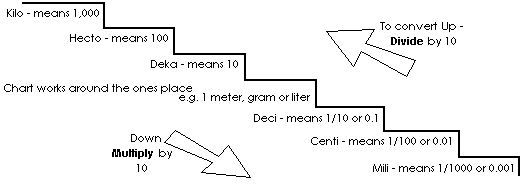Bell Question: Describe where you have used the 3 types of graphs?
-I've used graphs in Math, Science, and at home using Microsoft Office Exel.
Random Questions: Is it accurate? Was it Measured? Does that number have meaning?
Significant- has meaning (digits or figures)
What is Significant?
1. All nonzero numbers
123.478-significant figures
2. Zeros between significant figures
207- significant
3. Leading zeros are NOT significant
.0003723-not significant
4. Trailing zeros in a number with a decimal point
1.00000- significant
How many significant numbers?
A) 573 - 3 significant
B) 502.00 - 5 significant
C) 87 - 2 significant
D) .000283 - 3 significant
Rules for Significant Figures:
1. Multiply and Divide
- your answer can only be significant to the least signigicant amount of significant in you problem.
23.2 x 87.97 x 56.9287 - can only have 3 significant figures
2. Adding and Subtracting
- your answer can only be stated in decimal places that you have in your problem.
23.2 + 48.76 + 89.789 - can have significant figures somehow
-a student who needs help













